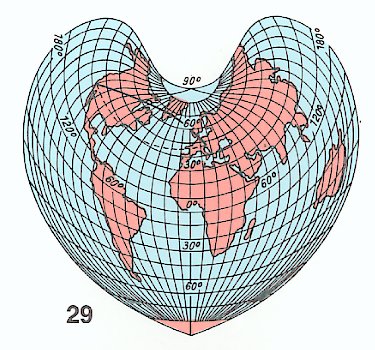See the Math!
42° 07' 06"N
70° 56' 47"W
How many degrees, minutes, and seconds away is your house? Check Stephen Morse for any U.S. address, or an atlas or globe for other places throughout the world.
The EarthView team is happy to be returning to Frolio Junior High School in Abington, just a few miles north of our home base in Bridgewater. We are blogging from campus, on a very LOVE-ly day to be in Abington, as the sun is coming out just in time for Valentine's Day.
Thanks to the geographers at Bucknell University for this example of a cordiform map projection to mark the occasion.
One of the United States is actually called the Valentine State because it was admitted to the Union on this date in 1912. Take a guess, and then read all about it on Celebrating the States, one of Dr. Hayes-Boh's family blogs.
Valentine's Day is also a perfect day to talk about the Wedding of the Waters at Manaus, Brazil. This is described in some detail on a blog post for a 2009 EarthView visit in Brockton. That post includes links to further information about Rondonia, in the western part of the Amazon basin.
During our visit we also discussed the new partnership between Bridgewater State University and the University of the State of Santa Catarina in Brazil. Students from the two universities can now do extended exchanges, in order to improve language skills (in Portuguese or English) and to learn each other's countries in greater depth.
We also discussed the upcoming soccer championship in Brazil, the World Cup. We look forward to hearing about Mr. Claus' experiences as he actually attends the Cup in Rio! The games will be played throughout the country, though: learn more about the geography of the World Cup from our blog, which we will be updating during June.
We also discussed the upcoming soccer championship in Brazil, the World Cup. We look forward to hearing about Mr. Claus' experiences as he actually attends the Cup in Rio! The games will be played throughout the country, though: learn more about the geography of the World Cup from our blog, which we will be updating during June.




No comments:
Post a Comment